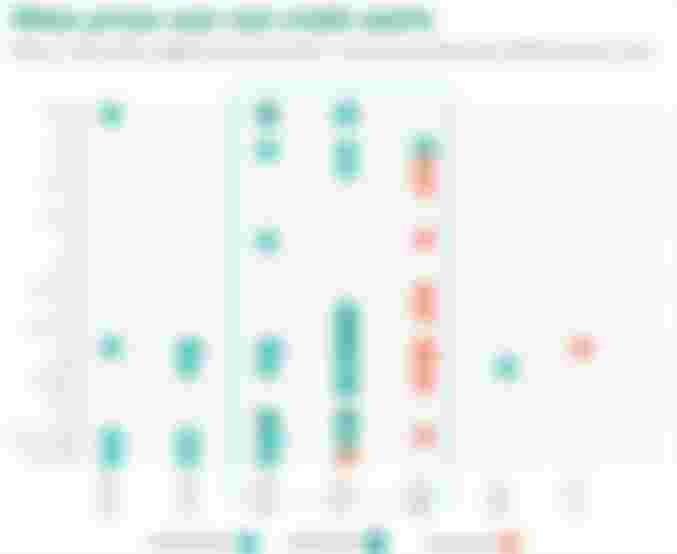Researchers at Harvard University argued in the article "Predictable Financial Crisis":
"In the event of a sharp rise in corporate debt and stock prices within three years, the probability of a financial crisis within three years is 45% ".
The financial crisis is an area of unpredictability. It is considered an unwritten rule that it is difficult to predict the possibility of a financial crisis even for experts who have infiltrated the financial market, no matter how many economic phenomena. Of course, some economists have put forward the theory that rapid credit expansion and rising asset prices lead to a financial crisis. This is Charles Kindleburger and Hyman Minsky. However, although these prominent economists found that credit expansion and rising asset prices caused a financial crisis, they did not even predict when it would trigger a financial crisis.
Researchers at Harvard University in the United States challenged this seemingly impossible task and published an article last June ("A Predictable Financial Crisis"), drawing attention. They are Professors Robin Greenwood and Samuel Hanson from Harvard Business School, Prof. Andrew Schleiper from Harvard School of Economics and Prof. Jacob Sorenson from Copenhagen Business School. They analyzed the incidences of financial crises that occurred in 42 countries over 66 years from 1950 to 2016, and developed a financial crisis forecasting model.
The researchers claim to have found six main points. First, if growth in corporate and household loans deviates from the past and increases within one year, the likelihood of a crisis increases by 2.8 percentage points over the next five years. This means that if the expansion period is only one year, the probability of a crisis is not very high.

Prior to the 2008 financial crisis, the main countries were in the "Red Zone", accompanied by credit expansion and surging asset prices.
Second, if large-scale credit expansion is accompanied by a boom in asset prices, the predictability of a financial crisis is much higher. This is the key question that the researchers argue. In particular, when the growth of corporate credit is high and at the same time the value of the stock market rises sharply, or when house prices rise rapidly and credit growth to households is high, the likelihood of a crisis increases significantly.
To achieve these results, the researchers created an indicator called the "red zone". The red zone refers to the period of overheating of the credit market. Specifically, the researchers found that if corporate credit growth over the past three years was in the top 20% of the historical trend, and stock market earnings over the same period were in the top 33% of the historical trend, then the country is in the "Business R-Zone." which was deemed to have entered. Home R-Zone is also set to the same standards.
According to researchers' analysis based on these criteria, when a country enters a corporate red zone, the likelihood of a crisis in one-year hours increases from 4% from normal to 13%. In addition, the probability of a financial crisis in the country within 2 years increases to 27%, and within 3 years it increases to 45%. The researchers explained that of the 75 corporate red zone cases in the sample, 34 led to a crisis within three years.
In addition, if a “household red zone” occurs, the likelihood of a financial crisis rises to 14% within one year and 26% within two years. It rises to 37% within 3 years and up to 41% within 4 years. The researchers said that even after entering the red zone, it gradually turns into a crisis, so politicians have time to respond.
Third, researchers assessed corporate credit overheating and household credit overheating as separate phenomena. In 63% of financial crises in 42 countries, the red zones of corporate or households followed. For example, the United States entered the household red zone in 2002-2006, and the financial crisis erupted in 2007. However, if there is an unusual occurrence in which corporate and household loans overheat at the same time, the likelihood of a crisis is much higher. The financial crisis that followed the collapse of the Japanese bubble in 1988 is a prime example of this.
Fourth, the overheating of the credit market has the characteristics of unification of countries due to the globalization of finance. The researchers applied variables such as the "global company red zone" and the "household red zone" to the model to determine if there was a global infection. Then these global variables greatly increased the likelihood of a crisis. For example, in 2007 Germany was not even close to the red zone. However, 33% of the countries in the sample were in the corporate red zone and 36% in the household red zone. As a result, the likelihood of Germany experiencing a crisis within three years was 37% in 2007, and in fact Germany experienced a crisis in 2008. In the case of the United States, given these global variables, the probability of the United States experiencing a crisis is projected to increase from 31% in 2002 to 51% in 2006.
Fifth, the emergence of a red zone will lead to a decline in real gross domestic product (GDP) in the future. The researchers predicted that corporate red zones and household red zones would cut real gross domestic product by 2% per year. Finally, if this is the case, it remains for policymakers to determine to what level the likelihood of a financial crisis should be accepted by the political authorities in order to respond quickly. The researchers pointed to the expected error due to overvaluation amid over-borrowing and over-investment during the credit boom. This means that they expect asset prices to continue to rise and over-borrow and invest. But when this overly optimistic belief turns into disappointment, the credit bubble bursts and a financial crisis ensues.
In the early stages of a credit boom, the researchers argue, proactive steps must be taken to prevent it. As the economy goes into the red, the government needs to consider tightening monetary policy, increasing banks' equity capital, and macroprudential economic responses. In particular, when the probability of the onset of a financial crisis exceeds 40%, researchers prescribe to take active measures.
If so, I wonder when Korea entered the red zone? According to researchers' analysis, Korea entered the company's red zone in 1995, and two years later faced a crisis in 1997. And in 2007, he entered the "Corporate Red Zone". In addition, he entered the home red zone twice from 1989 to 1990 and from 2002 to 2003.

Dear readers, I will be grateful for any support for my content. Hope you found it interesting.